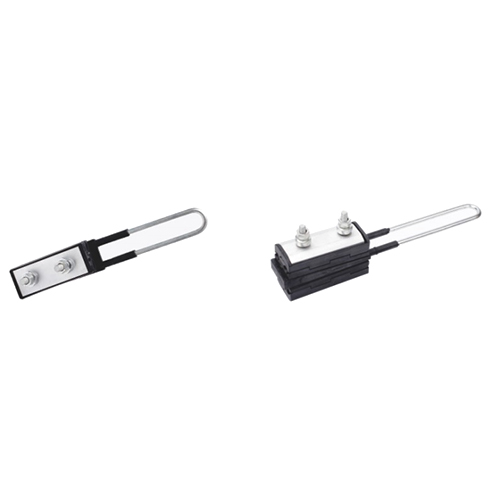Understanding Cable Terminal Lugs: Essential Components for Electrical Connections
2025-02-11
When working with electrical systems, whether in residential, commercial, or industrial settings, ensuring a secure and reliable connection between cables and electrical equipment is essential. One key component in achieving this is the cable terminal lug. These small yet crucial devices play an important role in ensuring proper electrical connections, preventing corrosion, and ensuring the safety and longevity of electrical systems.
What Are Cable Terminal Lugs?
Cable terminal lugs are metal connectors used to attach the end of a cable to a device or another conductor. The lug provides a secure and electrically conductive path between the wire and its connection point. The term "lug" refers to a small metallic part with a hole, typically made of copper, aluminum, or sometimes brass, designed to fit around the wire and allow it to be fastened to a screw, bolt, or other terminal.
Types of Cable Terminal Lugs
There are several types of cable terminal lugs, each designed for specific applications and wire sizes. These include:
1. Ring Lugs: These are the most common type of terminal lugs and feature a ring-shaped end that can be placed around a screw or bolt. They are perfect for applications where the cable will be bolted to a terminal block or a similar fixture.
2. Spade Lugs: These terminal lugs have a flat, fork-like design. They are ideal for applications where the lug will be inserted between two components, such as a terminal strip or a busbar.
3. Pin Lugs: Pin lugs are designed to fit into specific terminals, and they typically feature a cylindrical pin that fits into a hole or slot. These are commonly used in applications where space is tight.
4. Butt Splice Lugs: Butt splice lugs are designed to connect two cables end-to-end. The lugs join the wires by inserting their ends into the barrel of the terminal and then crimping them to create a strong electrical bond.
Materials Used in Cable Terminal Lugs
The material of a cable terminal lug is essential for its functionality, as it impacts the conductivity, durability, and corrosion resistance of the connection. Common materials used for terminal lugs include:
- Copper: Copper is widely regarded as the best conductor of electricity, making it a top choice for high-quality lugs. Copper lugs are often used in applications requiring high conductivity, such as power distribution and electrical equipment connections.
- Aluminum: Aluminum lugs are lightweight and cost-effective alternatives to copper. They are commonly used in medium- and low-voltage applications. However, they are more prone to corrosion and require proper treatment, such as tinning, to ensure optimal performance.
- Brass: Brass lugs are less common than copper or aluminum but are used in some specialized applications, especially where corrosion resistance is important, such as in marine environments.
How Are Cable Terminal Lugs Used?
Using cable terminal lugs is a straightforward process, but it requires attention to detail to ensure a safe and efficient connection. Here are the general steps involved:
1. Preparation: Strip the insulation from the wire, ensuring you leave enough exposed metal to fit into the terminal lug.
2. Insertion: Insert the exposed wire into the barrel of the lug. The fit should be snug to ensure a strong connection.
3. Crimping: Use a crimping tool to secure the wire within the lug. Proper crimping ensures a solid mechanical and electrical bond. The crimping tool will deform the barrel of the lug around the wire, ensuring a tight fit that prevents any movement or loosening.
4. Fastening: Once the wire is securely crimped into the terminal lug, the lug can be attached to a terminal block, panel, or device using a screw or bolt.
Benefits of Using Cable Terminal Lugs
1. Secure Connections: Cable terminal lugs provide a stable, long-lasting connection between cables and electrical equipment, reducing the risk of loose connections, which can lead to electrical failures.
2. Enhanced Safety: A proper connection helps prevent dangerous situations such as short circuits, overheating, or electrical fires. Well-made terminal lugs ensure that the current is transmitted efficiently and safely.
3. Durability: By using terminal lugs that are made of high-quality materials like copper or aluminum, the connection remains resistant to corrosion and wear, which is especially important in harsh environments.
4. Flexibility: With various types and sizes of cable terminal lugs available, they are versatile and suitable for a wide range of applications, from simple household electrical systems to complex industrial machinery.
5. Ease of Use: The installation of cable terminal lugs is relatively simple and does not require specialized skills or tools, making them a practical choice for both professionals and DIY enthusiasts.
Conclusion
Cable terminal lugs are small components with a big impact. Their role in creating secure and reliable electrical connections is critical in ensuring the performance and safety of electrical systems. By understanding the different types of lugs, the materials used, and their proper application, you can make informed decisions when choosing the right terminal lugs for your project. Whether you're working on a home electrical project or in a demanding industrial environment, investing in high-quality cable terminal lugs will ensure your connections remain secure and efficient for years to come.



